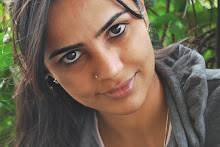 Platform 15 as a group was conceived last year towards providing a spontaneous breeding collective to these fifteen artists. The thread of their aesthetic aspirations and an urge to communicate and exhibit through the institutionalized channel cleaved the bond. Under this purview, the ‘platform’ gears up for conjugating their cross-cultural, cross-regional belongin
Platform 15 as a group was conceived last year towards providing a spontaneous breeding collective to these fifteen artists. The thread of their aesthetic aspirations and an urge to communicate and exhibit through the institutionalized channel cleaved the bond. Under this purview, the ‘platform’ gears up for conjugating their cross-cultural, cross-regional belongin gs and puts forth the aesthetic structures that are existentially pitched.
gs and puts forth the aesthetic structures that are existentially pitched. Deivasigamani experiences seizure of his recurring emotions captivated in force of banal complexities. The canvas is a potential surface delineating his representational identity animated in somber tints. Hailing from Pune is Snehal Kulkarni for whom the visceral forms unveil their force as she prolongs her engagement with canvas. Art then becomes a fulfilling process as well as a curious offshoot of the cognitive faculty seeking meaning even if that leads to an ambivalent direction. Tanushree Goyal from
 definite pace is an inert function of Mariyam’s canvasses. The veins of lyrical lines flow at deliberate angular directions structuring out the microcosm of her identity within the abstract universe. This formulation is outgrowing on the artist for some years, consecrating her pictorial surface with elements of the feminine, and the fragile yet keeping an enduring quality.
definite pace is an inert function of Mariyam’s canvasses. The veins of lyrical lines flow at deliberate angular directions structuring out the microcosm of her identity within the abstract universe. This formulation is outgrowing on the artist for some years, consecrating her pictorial surface with elements of the feminine, and the fragile yet keeping an enduring quality. Attempting for a pictorial idiom in depicting female nudes, Sounder seeks to delve into the gentlest epitome of personified beauty i.e. the nuances of female anatomy. Situating his accomplishes within the traditional realm of advancing the visual pleasure, he balances the formalistic attributes of the palette and canvas to define his distinct style.
Sunitha Subramanyam posits the visage of mannequins as apparent forms in a photo-realistic manner. This suggestiveness of the mannequins signifies the commodification of the self, the urban body and its plasticity that is an antithesis of all that is natural.
The portrayal of mechanized and dehumanized self is also a comment on the notion of power where this hapless form is analogous to the deprived section of the society, both animated to perform as per the dominant whims. Satish Kumar creates a niche for himself embarking on developing a distinct technique by manipulating acrylic color to bring the translucence of water color. Imparting the ingredients for a veritable aesthetic viewing, the locus of operation exists within the narrow lanes and streets and the old historical monuments. Purporting for screening of an objective reality, Sabarish constructs a labyrinth of burgeoning ‘concrete developments’ in the urban locales. Dimensional attributes like narrow lanes, lamp posts, rooftops and hutments intertwine each other to assign a substantial character to these formations. The artist chooses to celebrate this composite form rather than critiquing it on social grounds. Treading a reverse and determined course, Magesh borrows his imagery from his immediate socio- political surrounds. His works are also characterized by strong autobiographical overtones, grappling with tension linked to factors of societal fracture and aggravation of human deprivation in face of irrepressible modernization. Durga Prasad’s drawings and etchings exude pain and pathos. Hurt and internal wounds shriek through dark and forceful strokes. They scream for a release through the hatches, in vigorous potency. The bitterness and the war inside seek a counter response of tenderness and compassion within the self.
Arpit Biloria organizes his forms on minimalist grounds contemplating the surface as a base for crystalline visual embodiment. The interplay of the geometrical configurations in black on a pristine white base invokes a transcendental energy infused through an adept rendition of the diffused pigments on the canvas. Working in a similar vein construing dimensions of reductive aesthetics is Deviba Wala. The broad spectrums of lines intersect into each other as if weaving a beguiling net for the viewer to immerse in. The bands of flat channels even as they run through each other, successfully retain their space as individual entities. Articulating her selfhood through figurative characterization, LopaMudra couples the feminine forms with her personal emotive strands. Incorporating similar ethos in sculptural forms, Deepal approaches her subjects with acute intensity and warm sensitivity. Bronze exudes a rudimentary quality yet the palpable aura of delicateness and fragility associated with womanhood remains. Rajesh Kumar Prasad delights in the creation of hybrid imaginary creatures that he posits as actors garbing their gravitational roles. The innate dimensions of the sculpting material delineate the final outcomes of his forms. His animate beings live in wildness sustained by their archaic instinctual drives feting the pristine values the artist’s believes in.
Though the pictorial research in all spheres of the works showcased is based on the analysis of their existential experiences, the immense imaginary metaphors underlie the common psyche aiding a seductive maneuvering in terms of the viewing experience.

No comments:
Post a Comment